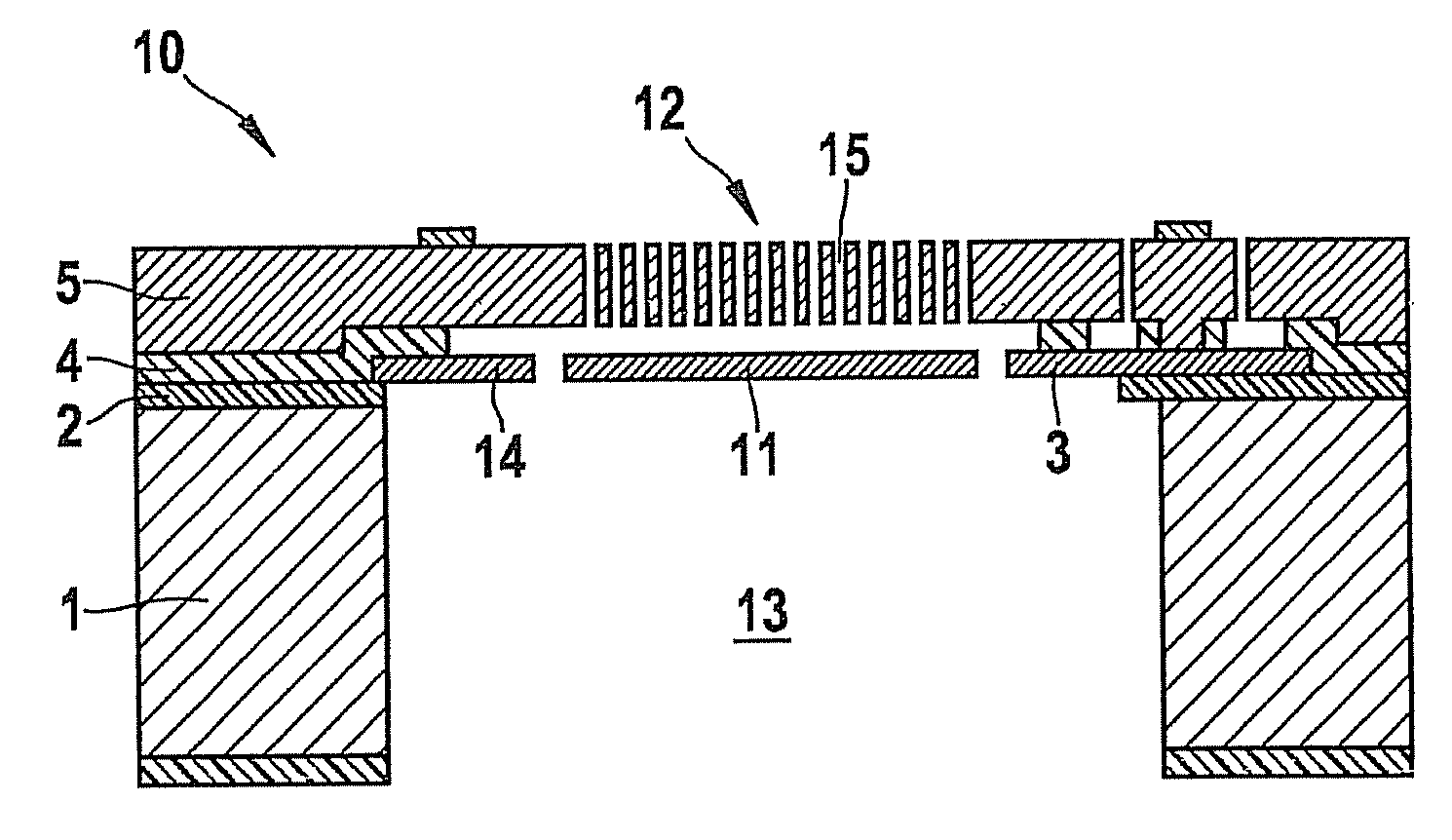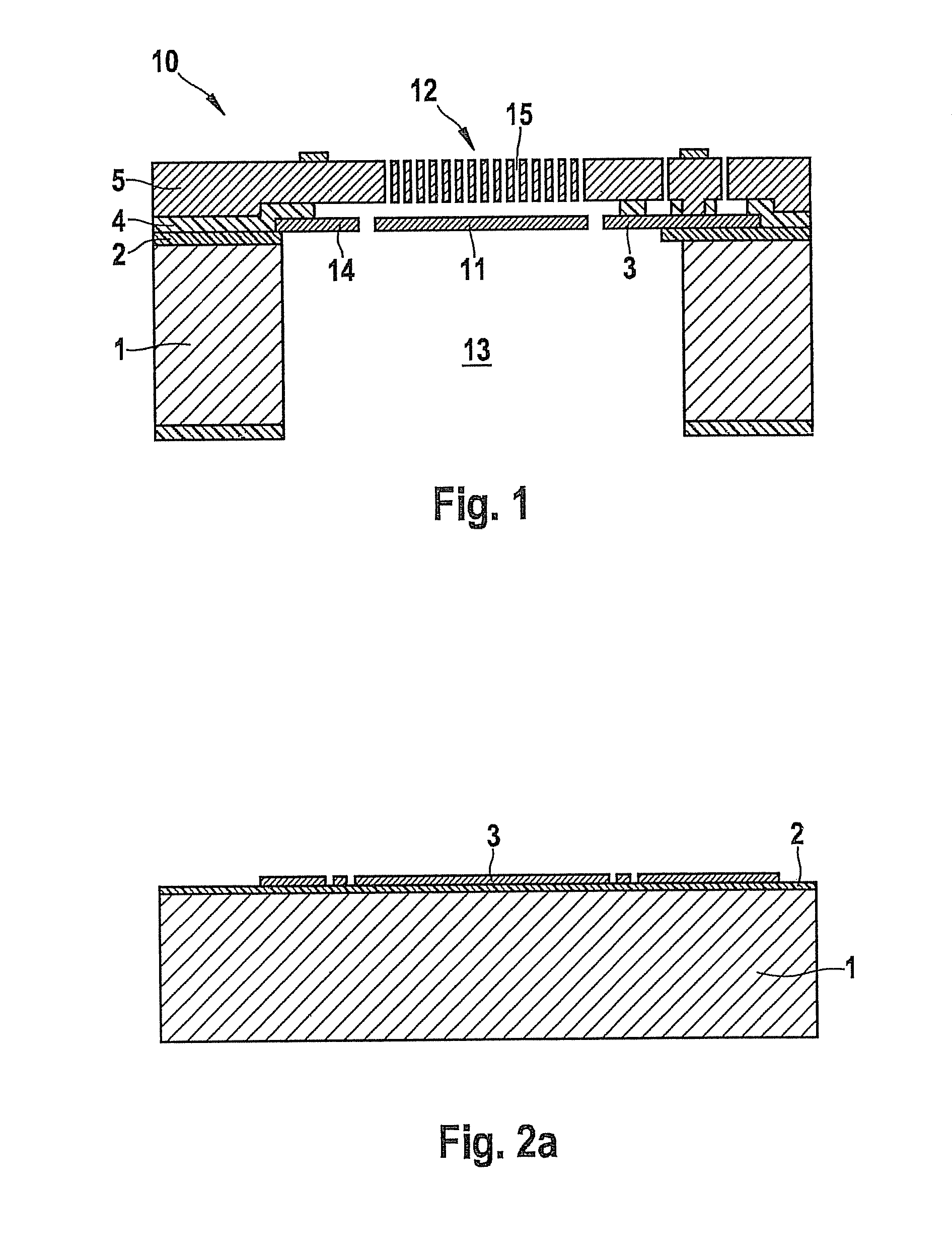Component having a micromechanical microphone structure, and method for its production
a micromechanical and microphone technology, applied in the direction of generator/motor, semiconductor electrostatic transducer, semiconductor/solid-state device details, etc., can solve the problems of high fragility of the conventional microphone component, inability to use these components without additional protective measures, and cost-efficient circular sawing with the aid of water-cooled circular saw, which is very common, and achieves high selectivity of the etching process. , the effect of high etching speed and large under-etching width
- Summary
- Abstract
- Description
- Claims
- Application Information
AI Technical Summary
Benefits of technology
Problems solved by technology
Method used
Image
Examples
Embodiment Construction
[0027]Component 10 shown in FIG. 1 includes a micromechanical microphone structure having a deflectable, acoustically active diaphragm 11, and a stationary, acoustically permeable counter element 12, which is also referred to as back plate. Here, diaphragm 11 and counter element 12 are realized in a layer configuration on a semiconductor substrate 1. A sound opening 13, which extends across the entire thickness of semiconductor substrate 1 and which is spanned by diaphragm 11 disposed on the top side of semiconductor substrate 1, is developed on the rear side of semiconductor substrate 1. Diaphragm 11 is realized in a thin polysilicon layer 3 and electrically insulated from semiconductor substrate 1 by a first insulation layer 2. The deflectability of thin diaphragm 11 is enhanced by its spring suspension 14 formed in polysilicon layer 3. In contrast, counter element 12 is developed in a relatively thick epi-polysilicon layer 5 above diaphragm 11 and fixedly connected to the layer c...
PUM
| Property | Measurement | Unit |
|---|---|---|
| thickness | aaaaa | aaaaa |
| thickness | aaaaa | aaaaa |
| thickness | aaaaa | aaaaa |
Abstract
Description
Claims
Application Information
 Login to View More
Login to View More - R&D
- Intellectual Property
- Life Sciences
- Materials
- Tech Scout
- Unparalleled Data Quality
- Higher Quality Content
- 60% Fewer Hallucinations
Browse by: Latest US Patents, China's latest patents, Technical Efficacy Thesaurus, Application Domain, Technology Topic, Popular Technical Reports.
© 2025 PatSnap. All rights reserved.Legal|Privacy policy|Modern Slavery Act Transparency Statement|Sitemap|About US| Contact US: help@patsnap.com



